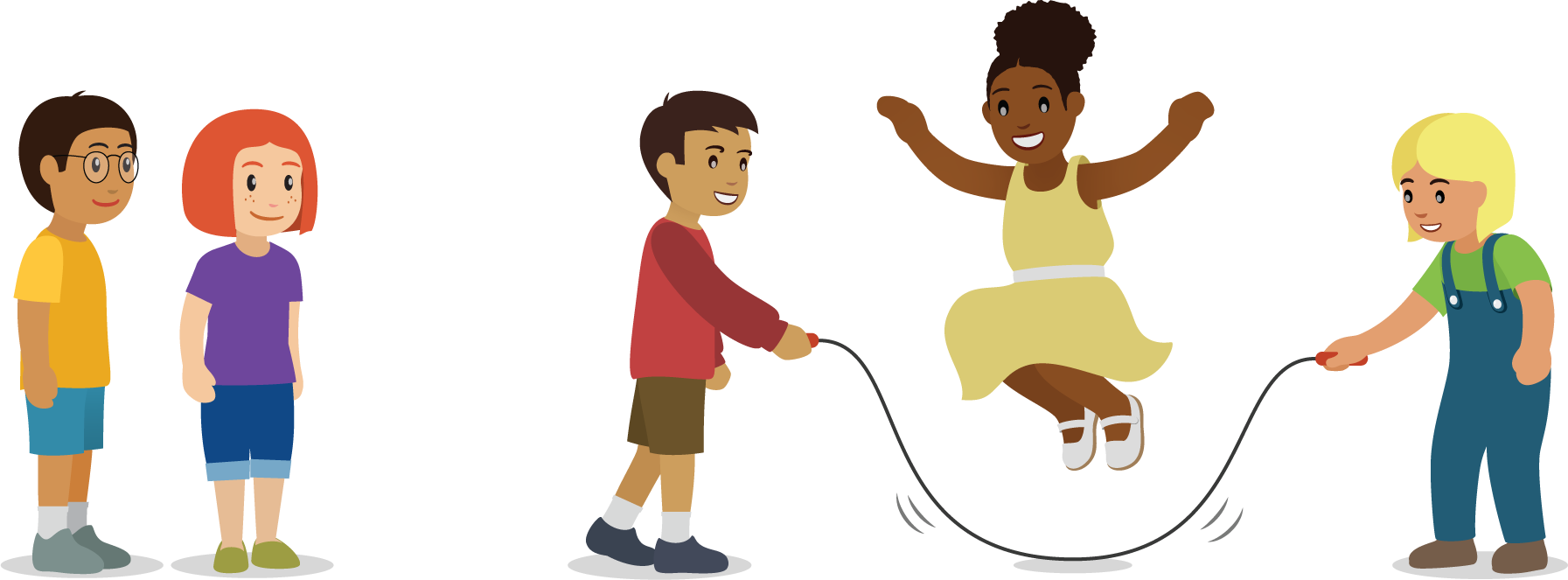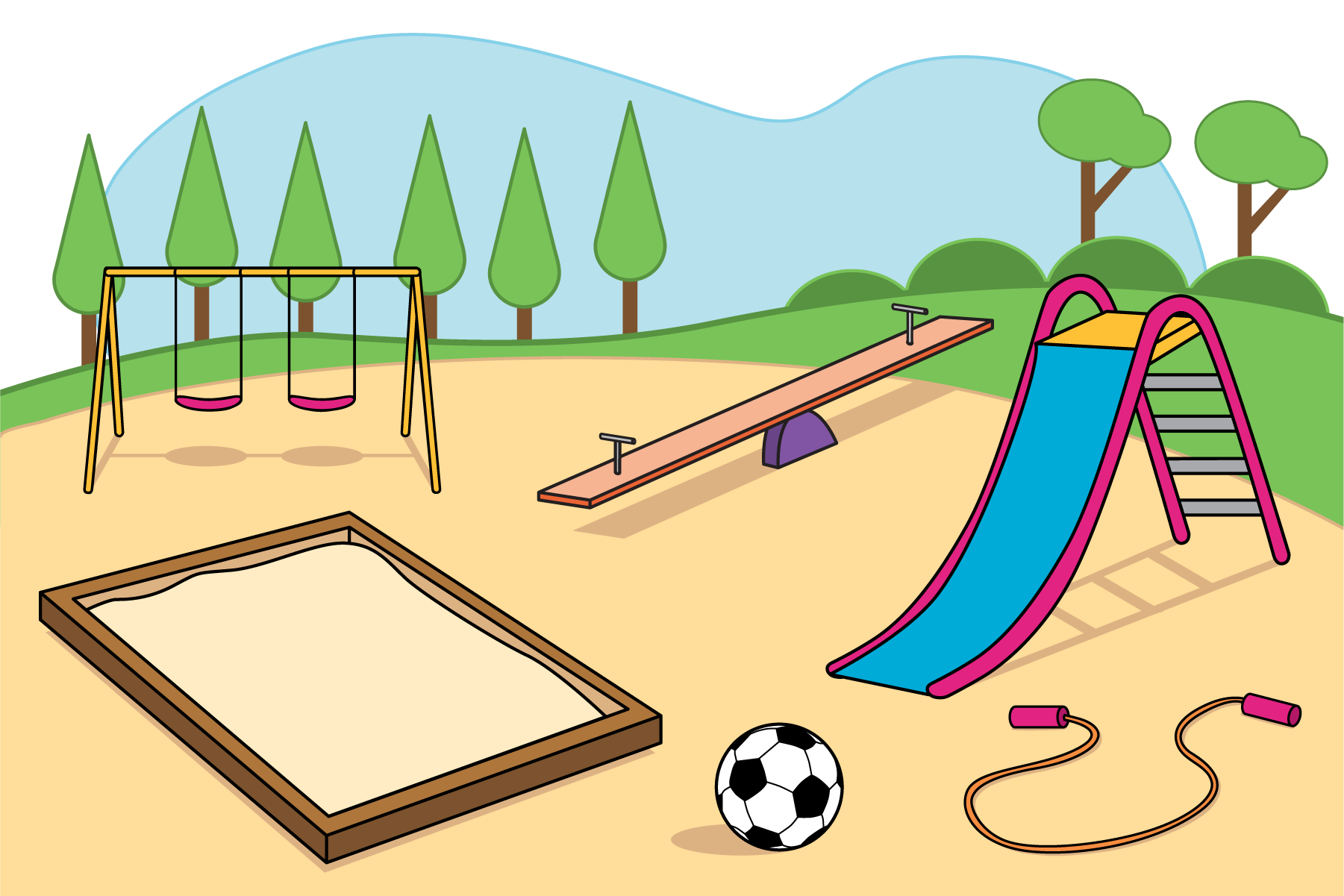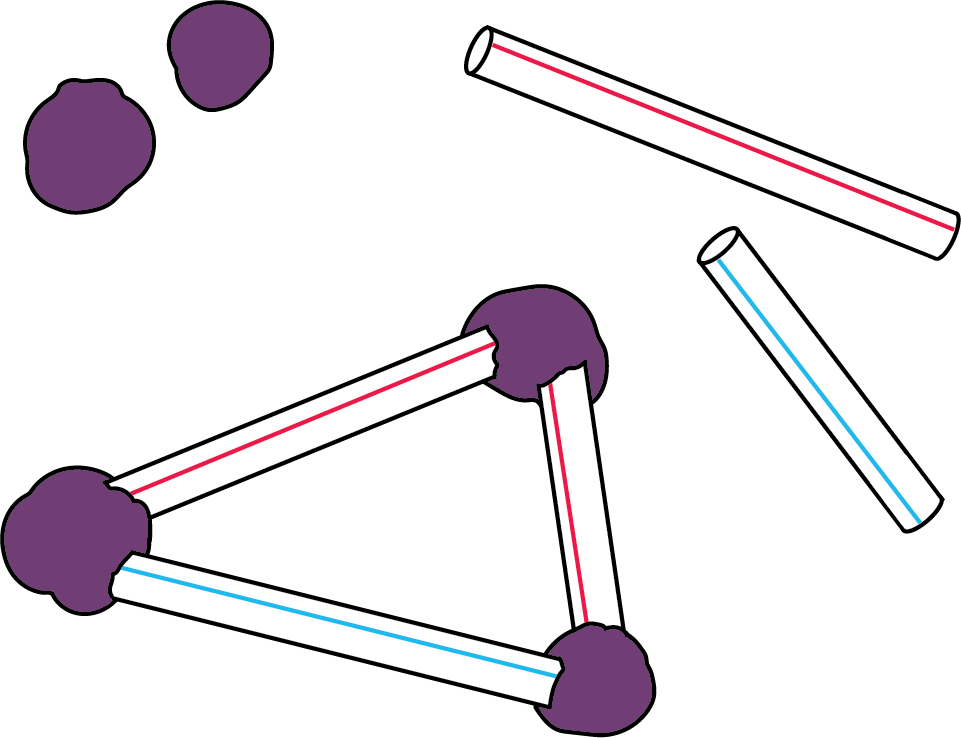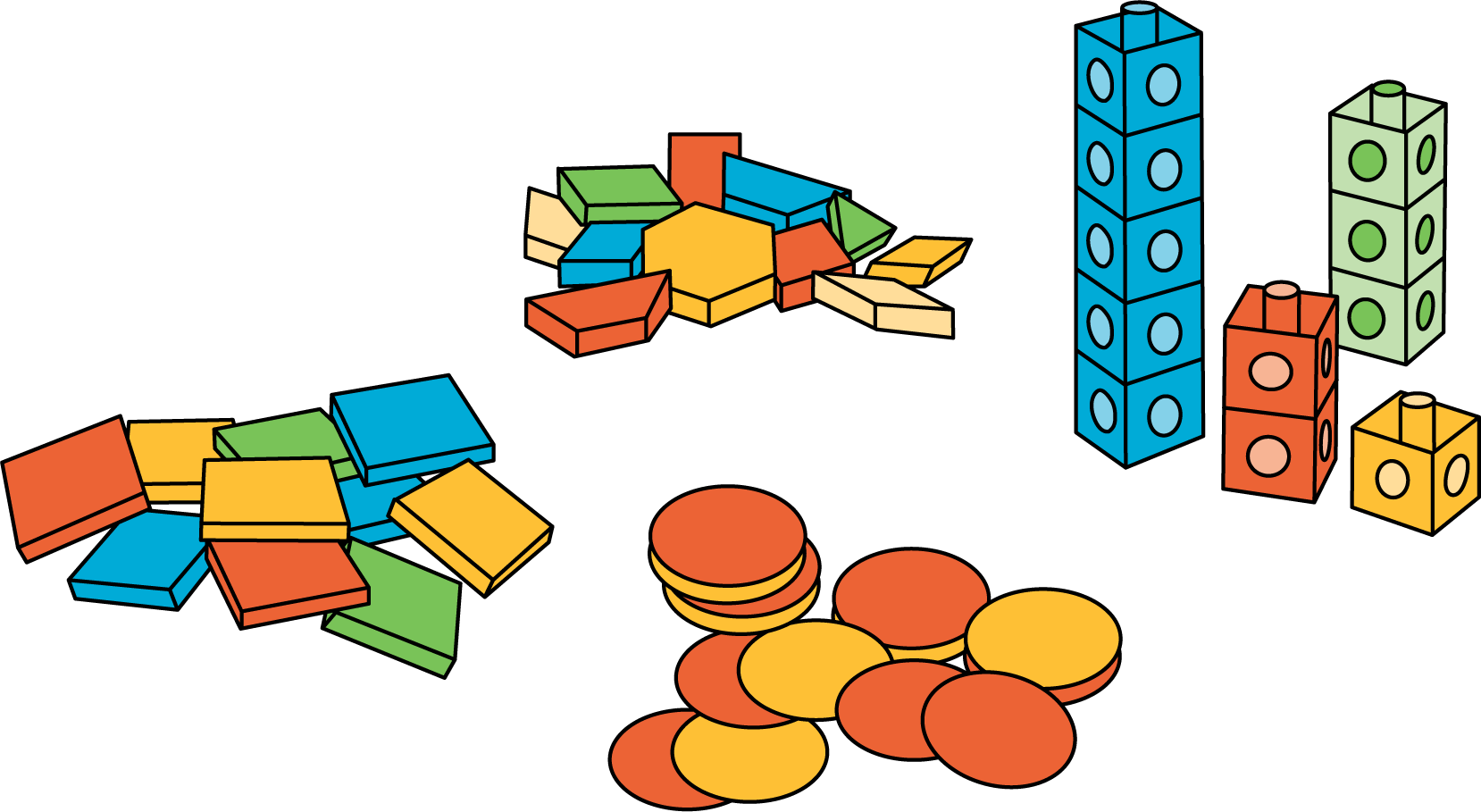Lesson 6
Tell and Act Out Stories
Warm-up: How Many Do You See: Add To (10 minutes)
Narrative
The purpose of this How Many Do You See is for students to subitize or use grouping strategies to describe the images they see.
When students notice that dots are being added on with each image, they look for and make use of structure (MP7).
Launch
- Groups of 2
- “How many do you see? How do you see them?”
- Flash image.
- 30 seconds: quiet think time
Activity
- Display image.
- “Discuss your thinking with your partner.”
- 1 minute: partner discussion
- Record responses.
- Repeat for each image.
Student Facing
How many do you see?
How do you see them?




Student Response
For access, consult one of our IM Certified Partners.
Activity Synthesis
- Display the first and third images.
- “What changed from the first group of dots to the third group of dots.” (2 more dots were added.)
- “The third group has 4 dots and 2 more dots. We can write that as ‘4 and 2’ or ‘\(4 + 2\)’.”
Activity 1: What is Happening? (10 minutes)
Narrative
The purpose of this activity is for students to create a story based on a picture. While students may notice and describe many details in the picture, the goal of the activity is for students to tell a story about the mathematical aspects of the picture. The picture allows for multiple interpretations and possible stories. For example, there may have been 5 students jumping rope and 2 students left or there could be 3 students jumping rope and 2 more students waiting for a turn. In the activity synthesis, the teacher writes a story based on a student’s interpretation of the picture.
Launch
- Groups of 2
- “Look at this picture of children. Imagine what you think is happening in the picture. Tell your partner a story about what is happening in the picture.”
- 1 minute: quiet think time
- 1 minutes: partner discussion
- Share responses.
- “Now tell a story that uses numbers to describe what is happening in the picture.”
Activity
- 1 minute: quiet think time
- 3 minutes: partner discussion
- Share responses.
- Monitor for students who focus on mathematical details of the picture, such as the number of students.
Student Facing

Student Response
For access, consult one of our IM Certified Partners.
Activity Synthesis
- Demonstrate writing a story based on students’ interpretation of the picture, such as: “There were 5 kids jumping rope. 2 students left to go play tag.”
- “We can use numbers and symbols to show what happened in the story. We can write ‘5 take away 2’ or ‘\(5 - 2\)’.”
- “In the next activity, you will hear and act out a story like the one we just wrote.”
Activity 2: Act Out a Story (15 minutes)
Narrative
The purpose of this activity is for students to make sense of Add To and Take From stories by acting them out. The stories are about students at recess, so the context is accessible for students and easy to act out. The contexts can be adjusted to reflect the things that students like to do at recess that are shared during the launch. Students act out the stories in small groups.
Advances: Listening, Representing
Supports accessibility for: Social-Emotional Functioning
Launch
- Groups of 6
- “What do you like to play at recess?”
- 30 seconds: quiet think time
- 1 minute: partner discussion
- Share and record responses.
- “Work with your partner to act out one thing that you like to do at recess.”
- 3 minutes: partner work time
- “Now we are going to hear and act out some stories about students playing at recess. Close your eyes and picture what is happening in the story.”
- Display and read the story about students jumping rope.
- 30 seconds: independent think time
- “Tell your partner what happened in the story.”
- Monitor for students who accurately retell the story. Choose at least one student to share with the class.
Activity
- “Now you will get to act out the story in your groups.”
- Assign groups to different parts of the room. Read the story again as students act out the story.
- If needed, ask “How can you show that there were 4 students jumping rope?” and “How can you show that 2 more came out to play with them?”
- 5 minutes: small-group work time
- Repeat the steps with the story about students playing soccer.
Student Facing
- There were 4 students jumping rope at recess.
2 more students came out to play with them. - There were 6 students playing soccer at recess.
3 of the students had to go inside.

Student Response
For access, consult one of our IM Certified Partners.
Advancing Student Thinking
If students retell the the first part of the story but not the action, consider asking:
- “Tell me about what happened in the story.”
- Reread the story and ask “6 students were playing soccer at recess. What happened next?”
Activity Synthesis
- Reread the story about students playing soccer.
- “What did you do first to act out this story?” (First we acted like we were all playing soccer.)
- “What did you do next to act out this story?” (Then 3 people walked away.)
- “How did you know that 3 people should leave the group?” (Because in the story, 3 of the kids had to go inside.)
- “The words in a story help us figure out what is happening. We can use numbers and symbols to show what happened in the story. We can write ‘6 take away 3’ or ‘\(6 - 3\)’.”
Activity 3: Introduce Subtraction Towers, Objects (20 minutes)
Narrative
The purpose of this activity is for students to learn stage 1 of the Subtraction Towers center activity. Students build a tower, roll to determine how many cubes to subtract, and count to determine how many cubes are left.
After they participate in the center, students choose from any stage of previously introduced centers.
- 5-frames
- Build Shapes
- Counting Collections
Required Materials
Materials to Gather
Materials to Copy
- Number Mat 1–5
Required Preparation
- Each group of 2 needs 10 connecting cubes.
- Gather materials from:
- 5-frames, Stages 1 and 2
- Build Shapes, Stages 1 and 2
- Counting Collections, Stage 1
Launch
- Groups of 2
- Give each group of students 10 connecting cubes and a number mat.
- “We are going to learn a center called Subtraction Towers.”
- Display a connecting cube tower with 7 cubes.
- “How many cubes are in the tower?”
- 30 seconds: quiet think time
- Share responses.
- “If I have to subtract, or take away, 3 cubes from my tower, what should I do?” (Break off 3 cubes, take off 1 cube at a time as you count.)
- “One partner uses up 5-10 cubes to build a tower. Then the other partner rolls to figure out how many cubes to take away, or subtract, from the tower. Then work together to figure out how many cubes are left in the tower. Take turns building the tower.”
Activity
- 8 minutes: partner work time
- “Now you can choose another center. You can also continue playing Subtraction Towers.”
- Display the center choices in the student book.
- Invite students to work at the center of their choice.
- 8 minutes: center work time
- If time, invite students to choose another center.
Student Facing
Choose a center.
Subtraction Towers

5-frames

Build Shapes

Counting Collections

Activity Synthesis
- “Which center is most challenging for you? What makes it challenging?”
Lesson Synthesis
Lesson Synthesis
“Today we heard and acted out stories about playing at recess.”
“7 students were climbing on the jungle gym. 3 of the students left to go jump rope instead.”
“How would you act out this story?” (7 of us would stand together and then 3 of us would leave.)
Cool-down: Unit 4, Section B Checkpoint (0 minutes)
Cool-Down
For access, consult one of our IM Certified Partners.